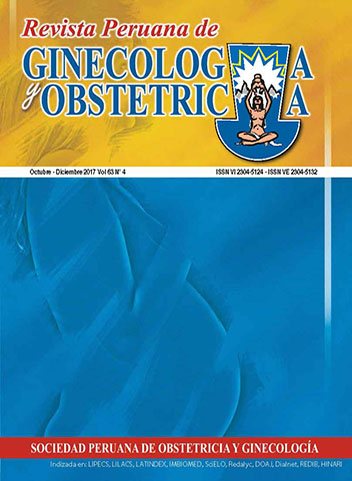Primary choriocarcinoma of Fallopian tube. Report of two cases
DOI:
https://doi.org/10.31403/rpgo.v63i2041Abstract
Introduction: Primary extrauterine choriocarcinoma is a rare entity and it usually involves the uterine cervix. Primary choriocarcinoma of the Fallopian tube is even rarer. Its clinical presentation resembles an ectopic pregnancy. The diagnosis is made by microscopic examination. Objective: We present two cases of primary tubal choriocarcinoma. Cases presentation: The first case presents a 27-yearold nulligravida who complained of pelvic pain for 30 hours and vaginal bleeding lasting 20 days. The second case is a 34-year-old women gravida 3, para 3, who was admitted because of increasing pelvic pain for the last 3 days and sparse vaginal bleeding for 2 weeks. On examination, both patients looked pale. The hemoglobin and hematocrit levels were 7.4 g and 28 mm, respectively. In both cases, the βhCG test was positive. Ultrasound examination in both cases showed an echogenic mass in the right fallopian tube. Both cases were diagnosed as ectopic tubal pregnancies. At laparotomy, Fallopian tubes appeared dilated in both patients. Pathological examination, including immunohistochemical stains, revealed choriocarcinoma with a diffuse βhCG positive reaction and a high Ki67 index in both cases. The patients received chemotherapy. Discussion: Primary Fallopian tube choriocarcinoma is a very rare entity. It is noteworthy that one of the patients we present had no previous history of pregnancy, hydatidiform mole or miscarriage.Downloads
Download data is not yet available.
Downloads
Published
2018-01-28
How to Cite
Romero Rojas, N., & Vicuña, M. (2018). Primary choriocarcinoma of Fallopian tube. Report of two cases. The Peruvian Journal of Gynecology and Obstetrics, 63(4), 641–645. https://doi.org/10.31403/rpgo.v63i2041
Issue
Section
Casos Clínicos
















